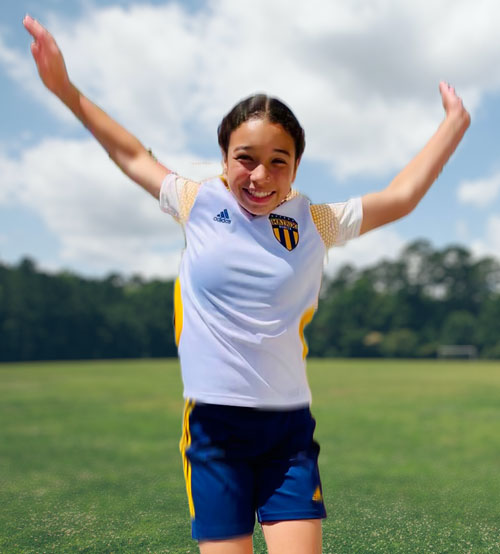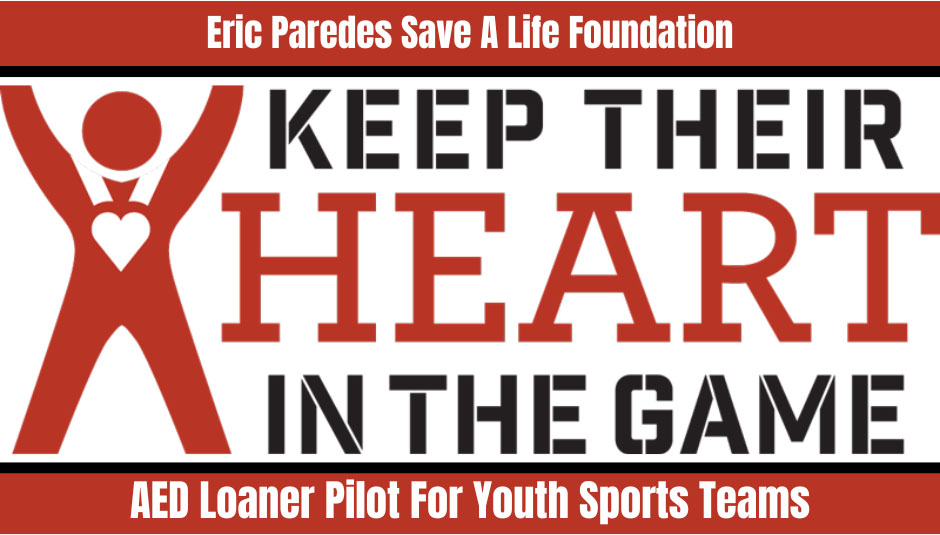Protect Your Athletes from Sudden Cardiac Arrest
The Eric Paredes Save A Life Foundation’s Keep Their Heart In the Game AED Loaner Pilot aims to prepare youth teams and leagues to not just acquire an AED but empower them to instill a lasting culture of prevention in their sports community. Program goals are to build confidence among administration to sustain an AED program and to implement a cardiac emergency response plan in their daily operations across all teams, coaches, parents and players.
Up to 23,000 youth are lost each year to Sudden Cardiac Arrest (SCA), the leading cause of death on a school campus the #1 killer of student athletes. Once SCA strikes, the survival rate is less than 10%. A coordinated and well-practiced response to a cardiac emergency by people who witness the SCA can increase survival up to 70%. Automated External Defibrillators (AEDs) are a critical component of this emergency response. A study published in Sports Health showed if an on-site AED was used in the resuscitation, 89% of athletes survived.
Pilot Participation Requirements
Teams may apply to borrow AEDs for short seasons, games or tournaments at no cost after participating in a cardiac emergency response training program provided by the Eric Paredes Save A Life Foundation, which includes:
How to Apply
AEDs are subject to availability via an application process and then to those who process the Agreement no later than two weeks before the desired start date. Once your application has been accepted you’ll be notified via email to process the Agreement. Details regarding obligations and responsibilities of program participation can be viewed in the introduction of the application.
AED FAQ

Isabelle Owens • August 17, 2009 – May 20, 2023
This program is dedicated to all youth lost to sudden cardiac arrest, including Isabelle Owens, a 13-year-old athlete who though effortlessly played soccer her entire life, collapsed during a game on a remote North County San Diego field in May 2023. An AED was not present, the park facility with an AED was locked, and a connection to 911 was difficult due to a weak signal. Though bystanders performed CPR for 25 minutes while awaiting an ambulance, Isabelle was lost.
Testimonials
“After working with Keep Their Heart in the Game, I can’t imagine running our summer tournaments without a cardiac emergency response plan in place. The peace of mind knowing that we are prepared to respond in an emergency has been well worth the work on the back end incorporating this into our standard tournament preparation process.”
—Craig Bedford, Tournament Director, City SC
Find “How To Use Your Avive AED” short tutorials, videos, cardiac emergency response plan toolkit, sudden cardiac arrest information flyers, training slide decks and more.
At the conclusion of the agreement term, please use this form to record information about your experience. Upon completion of the form and return of the AED package, your deposit will be refunded.
California’s Nevaeh Youth Sports Safety Act states by 2027 an AED must be accessible to young athletes during both practice and games.
This pilot has been generously underwritten by


